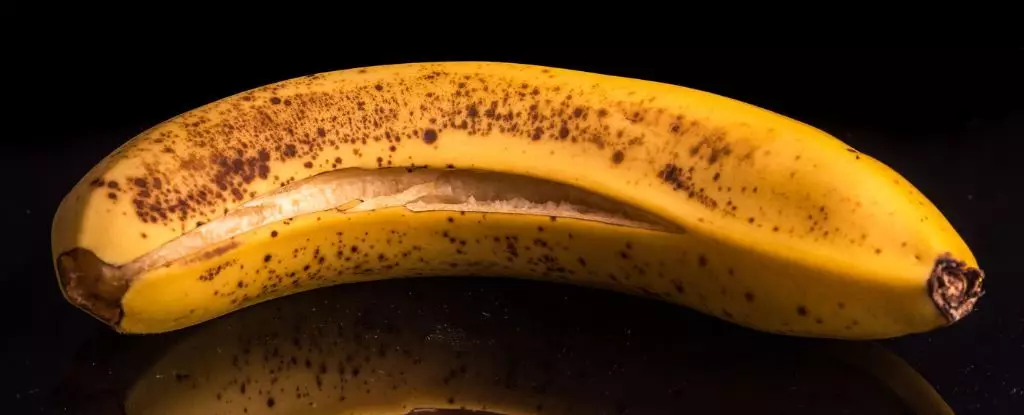In our fast-paced world, many of us are guilty of tossing food scraps without a second thought. Yet, one item that often ends up in the trash is the humble banana peel, a byproduct of a nutritious fruit. As studies emerge highlighting the nutritional benefits of banana peels, they hint at an exciting culinary trend that could redefine how we view food waste. Why are we ignoring these peels, which account for a significant portion of a banana’s weight, when they have so much to offer?
Recent research has showcased an innovative approach to utilizing banana peels by transforming them into banana peel flour. This process involves blanching, drying, and grinding the peels to create a fine powder that can be incorporated into various baked goods. This isn’t just a way to add novelty to our recipes; it has tangible benefits. In taste tests comparing sugar cookies made with traditional flour and those enriched with banana peel flour, consumers reported similar satisfaction levels. This discovery underscores a profound truth: not only are we discarding valuable nutrients, but we may also be overlooking delicious flavors.
The nutritional profile of banana peel flour is impressive. It boasts higher levels of fiber, potassium, magnesium, and antioxidants compared to standard wheat flour. These attributes contribute to a healthier diet and can play a role in combating chronic diseases. While it is advisable to be cautious about the proportion used in recipes — excessive amounts can lead to rubbery, brown cookies — a moderate inclusion of around 7.5% strikes the right balance, resulting in baked goods that retain appealing textures and flavors.
The exploration of banana peels does not need to end with cookies. Their versatility extends to numerous baked goods, including breads, cakes, and even pasta. In fact, banana peel flour has shown potential for enhancing cakes, providing them with natural coloring and added nutritional value. Research from 2016 indicated that replacing up to 10% of regular wheat flour with banana peel flour enriched nutrient profiles, enhancing protein, carbohydrates, and fats in the final products.
Beyond home baking, the culinary world has begun to embrace banana peels in surprising ways. Renowned chefs and innovative vegan food bloggers have introduced banana peel curry and even banana peel “bacon.” These novel creations not only showcase the culinary potential of an often-disregarded part of the fruit but also emphasize creativity in reducing food waste.
Globally, an alarming amount of food goes to waste, and bananas are no exception. With estimates suggesting that as much as 40% of a banana’s weight consists of peel, we are inadvertently discarding a substantial source of nutrition. By incorporating banana peels into our meals, we can address this considerable waste issue while simultaneously enriching our diets. The antioxidant and antimicrobial properties of banana peels could also potentially enhance the shelf life of various products, offering a double benefit.
While the focus is often on the fleshy part of fruits, adopting the “whole fruit” philosophy encourages a view of food that goes beyond singular priorities, highlighting sustainability alongside culinary exploration.
As we continue to innovate in the culinary world, it becomes crucial to shift our perspective towards underutilized food components like banana peels. By unearthing their nutritional benefits and integrating them into our diets, we can gain health benefits while promoting sustainability and reducing waste. The next time you peel a banana, pause for a moment and consider what you’re discarding. There might just be a world of flavor and nutrition waiting to be explored in that yellow skin. Embracing the potential of banana peels may not only benefit your palate but may also offer a transformative approach to how we think about food and waste in our communities. The future of cooking could very well lie in the parts of our food we’ve yet to appreciate fully—so let’s start peeling back those layers!

Leave a Reply